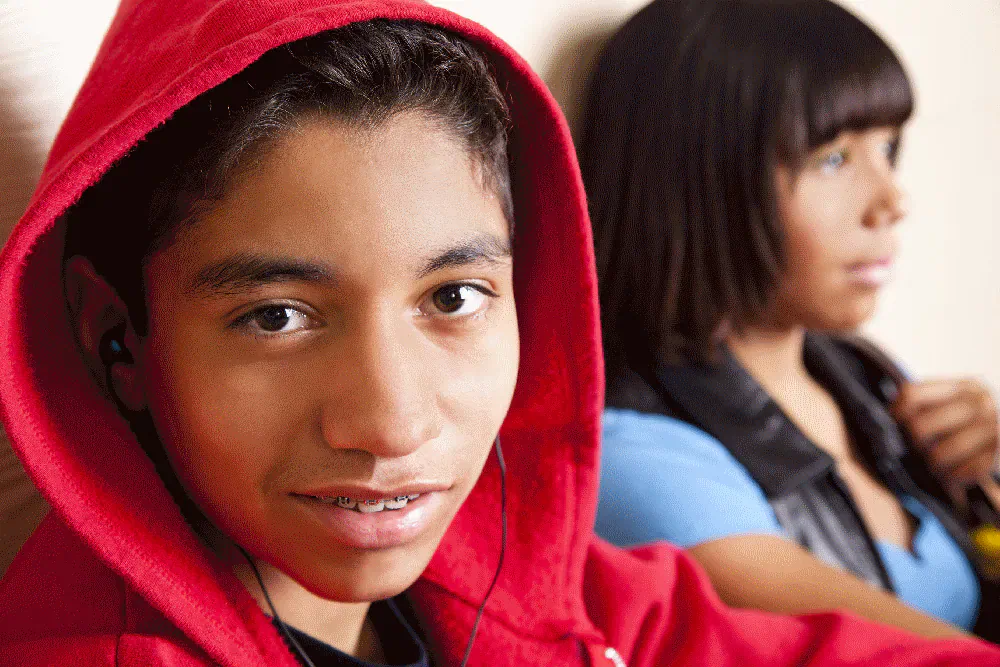How To Break Through The Teenage "yep, Nothin', Sort Of" Barrier

A while ago there was a viral video doing the rounds, offering a light-hearted musical take on teenagers who seem to have lost the ability to have a conversation. You can watch it here just for fun, but while it certainly captures a certain type of teenager response, I don’t think it gives the full picture.
We often see in the media the stereotypical teenager who answers questions with one syllable, and many believe this is because of “synaptic pruning” (put simply, the idea that adolescence causes some trimming and reshaping of the teenage brain). It seems we’re still learning a lot about this process.
PUTTING IT IN CONTEXT
But let’s step back a bit and think about the context of many adult-teenage conversations. Most adults, whether parents or teachers, are busy and feeling pushed for time. By the time children are teenagers, parents’ careers may have become more demanding and younger siblings may also need attention.
Often, it appears there’s no time to have those kind of casual conversations that keep the relationship on solid ground. Because parents are feeling rushed (and if there are specific issues parents want to tackle with their kids) they’ll pounce on an opportunity to tick that off their list of things to do. Before long, teenagers can develop the idea that conversations with adults invariably involve:
- Being told to do something
- Being told NOT to do something
- Being asked why they did or didn’t do something.
As a result, teenagers can become very cautious about engaging in any conversation because they know where it may lead. Then, the fewer opportunities to talk about things, and the more problems, the more parents want to grab their teenager as soon as they finally see them and say “let’s talk about the untidy room” or “why aren’t you doing your homework?”.
If you put yourself into the teenager’s shoes, not surprisingly they don’t find that a pleasant experience. So their typical strategy is to avoid or decrease opportunities for those conversations, which makes it more difficult for the parents, and the cycle continues and gets worse.
CREATE A NEW DYNAMIC
What we need to do is reverse that process. Here are a few ideas:
- Don’t start talking at them the minute they walk through the door after school, or when they come home late. Keep it brief and let them know you’re happy to see them.
- Look for opportunities that happen normally, such as mealtimes, watching TV together, driving the car, just before bedtime. Make use of the time that is perhaps just slipping by otherwise.
- Most importantly, make sure the casual opportunities are only about positive communication and pleasant conversations. Don’t use them to talk about problems, or let them turn into negative conversations.
- If you’ve got an issue with your teenager, make an appointment! Sit down at some time when you’ve both got nothing else taking your attention, and talk about it then.
BUT WHAT ABOUT TEENAGE BOYS? DON’T THEY DESERVE THEIR REPUTATION AS “GRUNTERS”?
There’s some evidence to show that communication and language skills develop earlier in girls, but gender differences may not play as great a role as they sometimes appear to.
The social environment is also an important factor. For example, if you’re mixing with a group who speaks in monosyllables, you’re likely to continue to speak that way. If you’re mixing with a group where detailed conversations about politics or life or other activities is rewarded and becomes part of regular conversation, then you’re likely to develop that repertoire. And if you’re often criticized or made fun of for being wrong, either by your peers or at home, there’s some “safety” in keeping it brief.
DO YOU REALLY WANT TO KNOW?
Another thing to consider is that by the time kids are teenagers, they know that sometimes adults don’t mean what they say. We may pass someone we know and say “how are you today?”, but not really want the other person to tell them. The socially acceptable response is usually “fine, thanks — how are you?”
Given all of the above, it’s no wonder that a parent’s initial enquiry is likely to be met with some kind of guarded, short response. We have to be prepared to push past that, to demonstrate we really are interested in having a conversation.
The critical thing here is that to develop a relationship, and have the kind of conversation you want to have, you need to be prepared to invest the time and effort required. That includes being prepared to really listen. Even if you’re not really into the latest sport statistic, computer game or fashion trend, tuning out or changing the subject sends the message that you don’t really care about what your teenager has to say. Too often, conversations derail onto what the parent’s interested in, not what the teenager wants to talk about.
TEACH AND LEARN
Learning to have successful two-way conversation is an important life skill, so you can also help your teenager by asking them about things they’re interested in.
Again, you don’t want to start off asking too many questions in case they think it’s an interrogation, but if you find a time that suits you both and genuinely want to know more about what their interests are, drawing them out of their shell can be more successful.
Get them to tell you about it and teach you about it, and listen more than you talk. You may be surprised at how much your teenager has to say, under the right circumstances.

